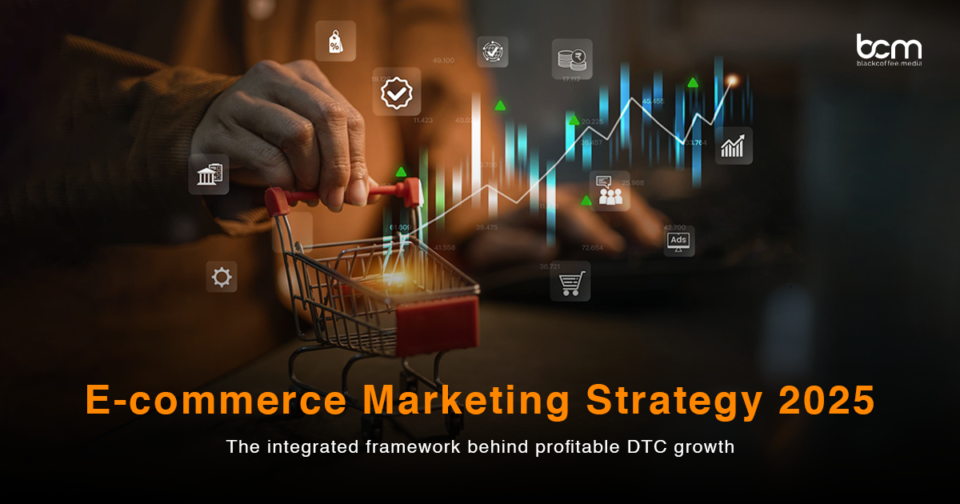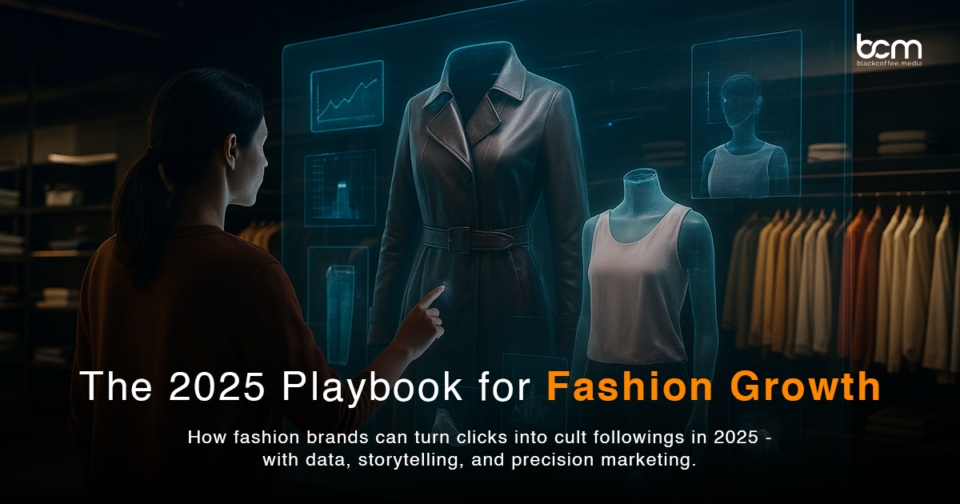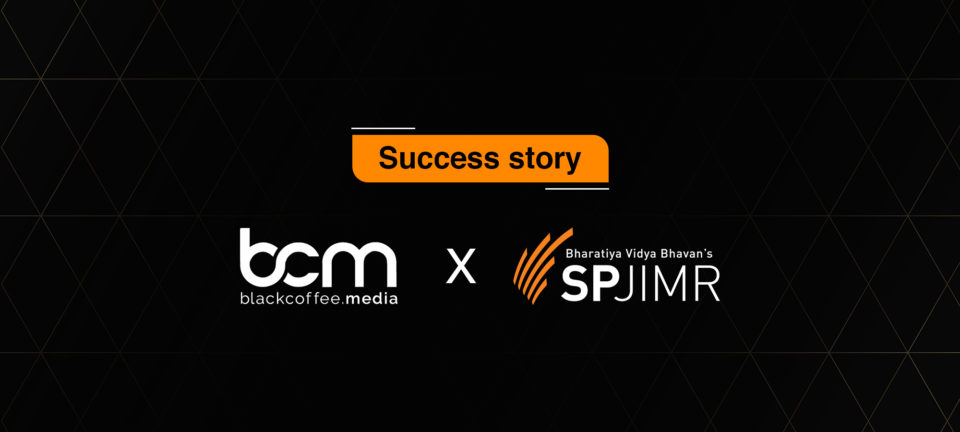
Digital Marketing Strategy for E-commerce Brands: 2025 Edition
November 7, 2025How Jewelry Brands Can Use Paid Media to Drive Online Sales

The jewelry industry has a peculiar relationship with digital advertising.
High average order values, emotional purchase decisions, extended consideration periods – it’s not exactly impulse-buy territory. Yet the brands winning in this space aren’t relying on organic reach or hoping their Instagram aesthetic does the heavy lifting. They’re building sophisticated paid advertising for jewelry brands that turns cold traffic into high-value customers.
Most jewelry brands treat paid media like a volume game. More impressions, more clicks, more traffic. But jewelry isn’t sold at scale the same way DTC skincare or apparel is. The purchase psychology is different. The consideration cycle is longer. The creative requirements are more demanding. And the audience segmentation needs to be surgical, not broad.
This is why paid advertising for jewelry brands requires a fundamentally different approach – one that integrates performance marketing with creative storytelling, and strategic architecture with tactical execution.
When done right, paid media becomes the primary revenue driver, not just a support channel.
How to Run Paid Ads for a Jewelry Brand?
Running effective paid advertising for jewelry brands starts with understanding that you’re not just selling products – you’re selling moments, milestones, and meaning. That requires a media strategy built around three core pillars: audience segmentation, creative hierarchy, and attribution modeling.
Start with audience segmentation that goes beyond basic demographics. Yes, you need to understand age, income, and location. But jewelry purchases are event-driven and emotionally charged.
Your segmentation should reflect purchase intent stages:
Are they browsing for inspiration?, actively shopping for an engagement ring?, looking for a gift with a deadline?, or replacing a lost piece? Each of these segments requires different messaging, different creative, and different conversion pathways.
Meta (Facebook and Instagram) remains the dominant platform for most jewelry brands, but not because it’s where people casually discover rings they want to buy. It’s effective because the targeting capabilities allow you to reach people in-market for specific occasions – engagements, anniversaries, graduations, holidays. The platform’s lookalike modeling can identify high-value customers based on your existing purchaser data. And the visual format works naturally for a product showcase.
Google Shopping and search campaigns capture high-intent demand. Someone searching “rose gold engagement ring” or “custom nameplate necklace” is significantly further down the funnel than someone scrolling Instagram.
These campaigns should be built with granular product segmentation, negative keyword strategies to avoid bargain hunters, and bid adjustments based on actual conversion value, not just conversion volume.
Creative hierarchy matters more in jewelry than almost any other category. You need upper-funnel brand storytelling that establishes emotional resonance and trust. You need mid-funnel product education that showcases craftsmanship, materials, and customization options. And you need lower-funnel conversion creative that removes friction and creates urgency. Most brands produce one or two creative variations and expect them to work across the entire funnel – that’s leaving money on the table.
Attribution is where most jewelry brands lose the thread.
A customer might see your brand ad on Instagram, click but not convert, search your brand name on Google three days later, click an email a week after that, and finally purchase through a retargeting ad. If you’re using last-click attribution, you’re misallocating budget.
Multi-touch attribution modeling – even imperfect versions – gives you a clearer picture of which channels are actually driving revenue versus which ones are getting credit for conversions they didn’t earn.
The structure of paid advertising for jewelry brands also needs to account for the fact that jewelry purchases often involve multiple stakeholders. Engagement rings are the obvious example – the purchaser isn’t the end user, and there’s often research happening across multiple devices and multiple people.
Your paid strategy should include consideration for how partners, friends, and family might be involved in the decision process, which means your retargeting pools and messaging need to be broader than the initial clicker.
What’s the Best Platform for Jewelry Brand Advertising?
There isn’t a single “best” platform for paid advertising for jewelry brands, but there is a best combination, and the mix depends entirely on your business model, average order value, and growth stage.
Meta’s ad platform (Facebook and Instagram) delivers the highest volume of new customer acquisition for most jewelry brands, particularly those with price points under $5,000. The visual nature of the platform works naturally for product showcase, and the targeting capabilities – especially around life events and in-market audiences – make it possible to reach people when they’re actually considering a purchase. Instagram Shopping integration creates a relatively frictionless path from discovery to conversion, though the best-performing jewelry brands don’t rely solely on native checkout. They drive traffic to optimized landing pages where they control the experience, capture email data, and upsell complementary products.
Google Ads – specifically Shopping campaigns and high-intent search – captures demand that’s already been created. Someone searching “where to buy diamond stud earrings online” has gone past the awareness stage. These campaigns tend to have higher conversion rates and shorter sales cycles than social, but the volume is limited by existing search demand. You can’t scale Google search campaigns beyond what people are actually searching for, which is why it works best as a demand-capture layer, not a demand-generation layer.
Google’s Performance Max campaigns have become increasingly effective for jewelry brands, particularly those with robust product feeds and strong creative assets. These campaigns use machine learning to automatically optimize across Search, Shopping, Display, YouTube, and Gmail. The lack of manual control frustrates many marketers, but the results often outperform what can be achieved through manual campaign structures, assuming you’re feeding the algorithm quality creative and accurate conversion data.
YouTube pre-roll and video action campaigns work for jewelry brands with higher AOV and longer consideration cycles. The format allows for storytelling that static images can’t deliver – showcasing craftsmanship, explaining customization options, and building brand credibility. The challenge is creative production: most jewelry brands don’t have video assets that work in a six-second pre-roll format, and commissioning high-quality video content requires meaningful investment. But for brands targeting engagement rings, luxury pieces, or custom work, YouTube’s ability to reach high-intent audiences with longer-form content creates opportunities that other platforms can’t match.
Pinterest remains underutilized by most jewelry brands, which is a mistake. The platform’s users have higher household incomes than most social platforms, and they’re actively using Pinterest for wedding planning, gift ideas, and style inspiration – all high-intent contexts for jewelry purchases. The visual search functionality and Shopping features create natural discovery paths, and the audience skews heavily toward key jewelry-buying demographics.
The volume won’t match Meta, but the quality of traffic is often higher.
TikTok is effective for specific jewelry brand archetypes – primarily fashion jewelry, accessible luxury, and brands targeting Gen Z. The platform’s organic virality creates opportunities for rapid brand awareness growth, but translating that awareness into sustainable paid media performance is more challenging. The ad platform is less sophisticated than Meta’s, the targeting is broader, and the purchase intent is generally lower. For fine jewelry and high-ticket items, TikTok works better as a brand-building channel than a direct-response channel, at least for now.
The reality is that effective paid advertising for jewelry brands requires platform diversification, not platform loyalty. Meta should typically carry 50-70% of your paid budget in the growth stage, with Google capturing 20-30%, and the remaining 10-20% split between testing channels like Pinterest, YouTube, or emerging platforms.
The exact mix shifts based on your specific business metrics, but concentration risk on a single platform creates vulnerability to algorithm changes, policy shifts, and platform performance degradation.
How to Increase Jewelry Sales with Digital Marketing?
Increasing jewelry sales through digital marketing requires understanding that paid advertising for jewelry brands doesn’t exist in isolation – it’s one component of a broader growth system that includes site experience, lifecycle marketing, creative production, and strategic positioning.
The first lever is creative velocity.
Most jewelry brands produce one seasonal photoshoot and try to stretch that content across six months of paid media. That approach might have worked in 2019, but creative fatigue sets in faster now, and algorithmic delivery favors fresh content. The brands seeing sustained growth are producing new static ads weekly, testing new hooks and angles constantly, and treating creative production as a core competency rather than a vendor service. This doesn’t mean you need a full production studio, but it does mean you need a system for generating and testing new creative concepts at volume.
Offer architecture directly impacts paid media performance. If you’re running the same 10% discount to cold traffic that you’re offering to your email list, you’re leaving money on the table. Cold audiences need different incentives than warm audiences – sometimes that’s a stronger discount, sometimes it’s free shipping, sometimes it’s a gift-with-purchase.
But it needs to be differentiated based on where the customer is in their journey. Your paid advertising for jewelry brands should have offer variation built into the campaign structure, not one universal discount applied everywhere.
Landing page optimization is where most jewelry brands have the most room for improvement. Driving traffic to your homepage or a generic collection page is inefficient.
Every paid campaign should drive to a dedicated landing page that matches the ad creative’s message, showcases the specific product or collection being advertised, and removes navigational distractions that lead to drop-off.
For high-AOV products like engagement rings or custom pieces, that landing page should include trust signals (certifications, guarantees, reviews), educational content (metal comparisons, sizing guides), and multiple conversion paths (buy now, schedule consultation, request custom quote).
Retargeting infrastructure is non-negotiable.
Someone who viewed an engagement ring and left isn’t a lost customer, they’re in the middle of a research process that often takes weeks or months. Your retargeting strategy should include sequential messaging that moves prospects through the consideration cycle: first retargeting ad reinforces quality and craftsmanship, second highlights customization options or customer reviews, third creates urgency with inventory scarcity or time-limited offers. Most brands run one generic retargeting ad to everyone who visited the site. That’s inefficient and leaves significant revenue on the table.
Email and SMS integration with paid media creates multiplicative effects, not additive ones. A customer acquired through paid advertising for jewelry brands should immediately enter a welcome sequence that builds brand affinity, educates on product quality, and drives repeat purchase or referral.
The lifetime value of customers acquired through paid media increases dramatically when they’re activated through owned channels. This also allows you to reduce customer acquisition costs over time, as email and SMS carry an increasing revenue load.
Strategic positioning affects paid media performance more than most brands realize. If your brand positioning is “affordable luxury jewelry,” you’re competing in the most saturated segment of the market, and your cost-per-acquisition will reflect that. If your positioning is “heirloom-quality fine jewelry for modern professionals,” you’re operating in a less crowded space with clearer differentiation.
Your paid advertising for jewelry brands performs better when your positioning is sharp, your ideal customer is specific, and your brand point of view is clear. Generic positioning creates generic creative, which drives generic results.
Testing rhythm separates brands that scale from brands that plateau. You should be testing new audience segments, new creative formats, new platforms, and new offers on a continuous cycle. Not reckless testing that destabilizes profitable campaigns, but structured testing that allocates 10-20% of budget to learning and optimization. The brands that scale profitably through paid media aren’t the ones who found a winning formula and stopped, they’re the ones who continuously refine, adapt, and improve their paid advertising for jewelry brands infrastructure.
Why BlackCoffee Media Builds Different Jewelry Marketing Systems
Most jewelry brands don’t have a paid media problem – they have a systems problem.
They’re running ads without creative infrastructure. They’re driving traffic to sites that weren’t built for conversion. They’re optimizing for metrics that don’t correlate with profit. And they’re working with agencies that treat jewelry campaigns like they’d treat any other e-commerce vertical.
BlackCoffee Media’s approach to paid advertising for jewelry brands integrates performance marketing with creative production in a way that most agencies structurally can’t. We’re not a media buying shop that outsources creative, and we’re not a creative studio that treats paid media as an afterthought. The performance and creative functions operate as one system, which means creative is built for algorithmic delivery from the start, and media strategy is informed by what actually resonates creatively.
This matters more in jewelry than in almost any other category because the creative requirements are more demanding, the emotional resonance needs to be genuine, and the brand positioning needs to be sharp enough to justify premium pricing.
Generic product photography and performance-first creative don’t work at scale in jewelry, but neither does beautiful brand storytelling without conversion architecture underneath.
The brands we partner with aren’t looking for an agency to “run their ads”, they’re looking for a strategic partner who can architect growth systems that connect paid acquisition to downstream revenue, who can build creative pipelines that support testing velocity, and who can identify which constraints are actually limiting scale.
If you’re running jewelry campaigns that feel like they’ve plateaued, or if you’re spending on paid media without clear visibility into what’s actually driving incremental revenue, the problem likely isn’t your budget or your product – it’s the architecture underneath. That’s the work we do, and we do it differently than anyone else in the space.



